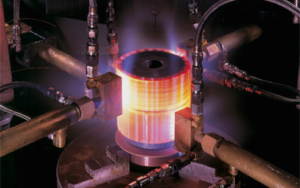Gears are the workhorses of many machines, transmitting power and rotation between shafts. Their performance directly impacts the overall efficiency and lifespan of a system. However, with a vast array of materials available, gear material selection becomes a crucial step in optimizing gear performance for your specific application.
This guide delves into the properties of various gear materials, exploring their strengths, weaknesses, and how they impact key factors like wear resistance, weight, and cost. By understanding these characteristics, you’ll be well-equipped to make informed decisions about the ideal material for your gear.
Gear Material Selection: Properties and Considerations
The success of your gear design hinges on selecting a material that excels in the following aspects:
- Strength:Gears experience significant loads during operation. The chosen material must possess adequate strength to withstand these forces without deformation or fracture.
- Wear Resistance:Gears are constantly in contact, leading to wear and tear over time. Material selection plays a vital role in minimizing wear and maximizing gear life.
- Fatigue Resistance:Gears are subjected to repeated stress cycles. The material needs to exhibit good fatigue resistance to prevent cracks and eventual failure.
- Machinability:Consider the ease and cost-effectiveness of machining the chosen material into your desired gear shape.
- Weight:Depending on the application, weight might be a crucial factor. Selecting a lightweight material can improve efficiency and reduce overall system weight.
- Cost:Material cost is a significant factor, especially for high-volume production. Striking a balance between performance and cost is essential.
Exploring Common Gear Materials
Here’s a breakdown of some commonly used gear materials and their key characteristics:
- Steels: Steel remains the most widely used gear material due to its excellent combination of strength, wear resistance, and affordability. Different types of steels offer varying properties; for example, plain carbon steels provide good value, while alloy steels offer enhanced strength for heavy-duty applications.
- Cast Iron:A cost-effective choice for low- to medium-speed applications with moderate loads. Cast iron offers good vibration damping and wear resistance. However, its brittleness and weight limit its use in high-speed applications.
- Plastics: Thermoplastics like nylon and acetal are increasingly being used for gears, particularly in low-speed, low-torque applications. They offer several advantages, including lightweight design, noise reduction, and self-lubricating properties. However, they generally have lower strength and wear resistance compared to metals.
- Bronze and Brass:These softer metals offer good wear resistance and corrosion resistance, making them suitable for applications with sliding contact or where lubrication is limited. However, their lower strength limits their use in high-load applications.
Selecting the Right Material for Your Needs
The ideal gear material depends heavily on your specific application. Here are some additional factors to consider when making your selection:
- Application Type:High-speed gears in racing applications require different properties compared to slow-moving gears in a conveyor system.
- Load Conditions:The magnitude and type of load experienced by the gear will influence the required strength and wear resistance of the material.
- Operating Environment:Exposure to extreme temperatures, corrosive elements, or moisture can affect material selection.
- Noise Requirements:Certain materials may generate more noise during operation than others.

Need help choosing the perfect gear material for your industrial application? Hanson Gear Works offers expert consultations alongside our top-notch gear manufacturing, planetary gearbox repair, and pump repair services.
Contact us today to keep your machinery running smoothly!
